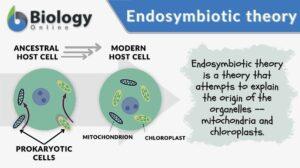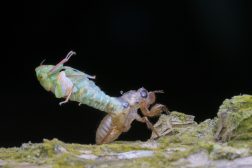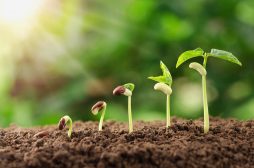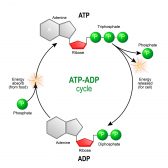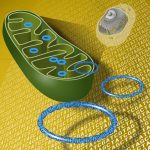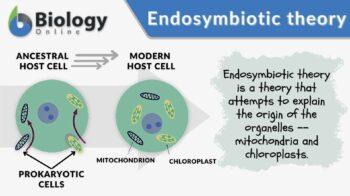
Endosymbiotic theory
n., [ˌɛndəʊˌsɪmbɪˈəʊt.ɪk ˈθɪɚ.i]
Definition: a theory proposing that the origin of organelles in eukaryotic cells is based on early endosymbiosis
Table of Contents
A eukaryotic cell is distinct from a prokaryotic cell by the presence of membrane-bound cellular structures called organelles. And based on this theory, the organelles mitochondria and chloroplasts are supposedly the early prokaryotic endosymbionts that had been taken in. They stayed inside the host cell for so long that they transitioned into those semi-autonomous organelles we know today.
Endosymbiotic Theory Definition
Endosymbiotic theory is one of the theories that are still prevalent to this day. It is a presumption that an endosymbiosis occurred between the early life forms. This form of symbiosis involves a larger cell that serves as a host and a smaller cell that is referred to as an endosymbiont.
In endosymbiotic theory, it posited that the larger cell engulfed or took in the smaller cell. The larger cell represents the eukaryotic cell of today whereas the smaller cell is the prokaryotic cell.
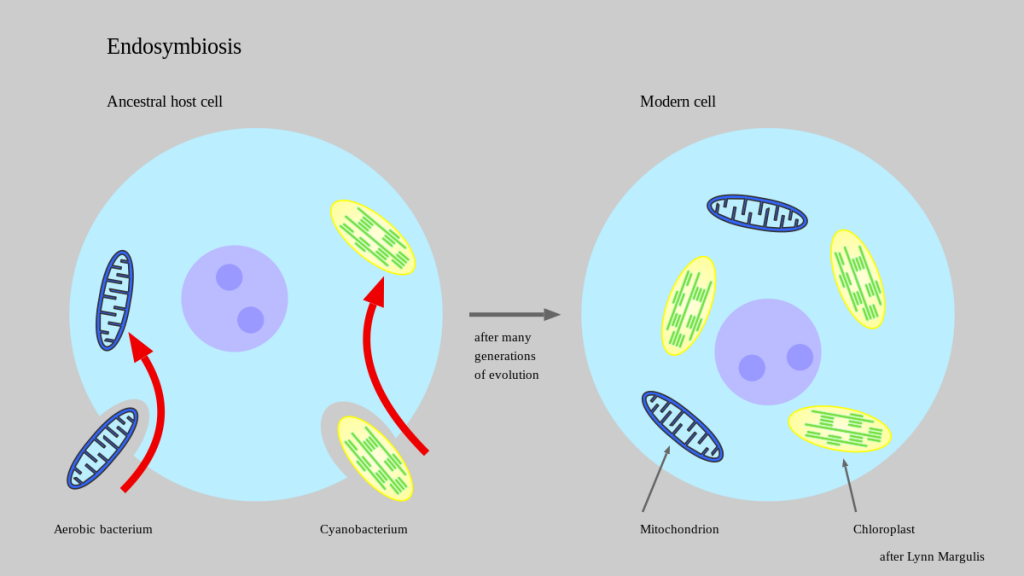
Watch this vid about endosymbiotic theory:
Endosymbiosis
Endosymbiosis is one of the many forms of symbiotic relationships (symbioses) that occur between or among organisms. In endosymbiosis, the endosymbiont lives within the body of its host. Endosymbiosis naturally occurs to this day. An example is a biological interaction between Rhizobium and the plant legumes.
Rhizobium is the endosymbiont that occurs within the roots of legumes and fixes atmospheric nitrogen into a form that is ready for use by the legume. The legume, in turn, provides Rhizobium metabolites such as malate and succinate from photosynthesis.
Endosymbiosis is the precept of the Endosymbiotic Theory, which was first conceptualized by botanist Konstantin Mereschkowski (4 August 1855 – 9 January 1921), and then backed up by scientific evidence by Lynn Margulis 1938–2011.
According to the Endosymbiotic Theory, endosymbiosis became the means by which organelles such as mitochondria and chloroplasts within eukaryotic cells came about.1 Proponent of this theory posited that about 1.5 billion years ago a larger cell took in smaller free-living prokaryotes (bacteria) and inside the cell the prokaryotes lived as endosymbionts.
Research findings that seem to back up this theory implicate that the mitochondria arose from proteobacteria (such as SAR11 clade) 2 whereas the chloroplasts arose from cyanobacteria (particularly the nitrogen-fixing cyanobacteria). 3
The indication that this theory is plausible is based upon the same features shared by these organelles and their prokaryotic ancestors. Some of the characteristics common to them are as follows:
- Both mitochondria and plastids are capable of reproducing their own through a process akin to prokaryotic binary fission.
- Both mitochondria and plastids have single circular DNA similar to that of bacteria in terms of size and structure but different from that of the nucleus of the cell.
- Porins in the outer membranes of mitochondria and chloroplasts are similar to those in the bacterial cell membrane. Cardiolipin, a membrane lipid, is found only in the bacterial cell membrane and inner mitochondrial membrane.
Other Thoughts
Miller-Urey experiment
The age of the Earth is estimated to be around 4.54 billion years and life eventually existed and began about 3.5 billion years ago or earlier. The modern theory of abiogenesis holds that life on Earth began when the earliest living entities took in non-living materials.
They used these organic compounds to produce biomolecules and other building blocks of life. Biochemical processes, e.g. self-replication, self-assembly, autocatalysis, and cell membrane formation, probably led to the emergence of living entities. These processes were believed to be gradual and comprised of multiple events.
In the Miller-Urey experiment (i.e., Stanley Miller and Harold Urey), the results indicated that the simulated-primitive Earth favored the chemical syntheses of the fundamental structures of the cell membrane. Mixing gases methane, ammonia, hydrogen, and water and then electrically-sparking them resulted in the formation of amino acids.
Prebiotic soup
Around four billion years ago, the Earth was hostile to life. No life forms could exist due to the harsh conditions. Eventually, simple organic compounds formed.
The hypothetical model of the early Earth with conditions that led to the synthesis of simple organic compounds is called the prebiotic (primordial) soup. Alexander Oparin 1894–1980 and John Burdon Sanderson Haldane 1892–1964 were the ones to conceive this idea and independently formulated theories that collectively became the heterotrophic origin of life theory.
Both of them theorized that the early Earth’s atmosphere was a chemically reducing atmosphere. It aided in producing such organic compounds. As these compounds were produced, they accumulated and formed a so-called prebiotic soup. Through time, these simple organic compounds transformed into more complex organic polymers.
In the long run, life came about. The first life entities took in and used organic molecules to thrive and survive in the prebiotic soup. They theorized that the first forms of life were heterotrophic. Recent evidence, though, suggests that autotrophs are likely the first organisms.
RNA World hypothesis
The four major biomolecules essential to life are nucleic acids (e.g. RNA, DNA), carbohydrates (various sugars), lipids (fats), and amino acids (constituents of proteins). Primitive life is hypothesized to be RNA-based since RNA could be both genetic material and a catalyst. The transitioning of primitive life forms into single-celled living things occurred gradually for many million years.
Take the Quiz on Endosymbiotic Theory!
Further Reading
References
- endosymbiosis. (n.d.). Collins English Dictionary – Complete & Unabridged 10th Edition. Retrieved from Dictionary.com website http://dictionary.reference.com/browse/endosymbiosis.
- “Mitochondria Share an Ancestor With SAR11, a Globally Significant Marine Microbe”. (2011). Retrieved from ScienceDaily Link.
- Deusch, O.; et al. (2008). “Genes of cyanobacterial origin in plant nuclear genomes point to a heterocyst-forming plastid ancestor”. Mol. Biol. Evol 25: 748–761
© Biology Online. Content provided and moderated by Biology Online Editors

